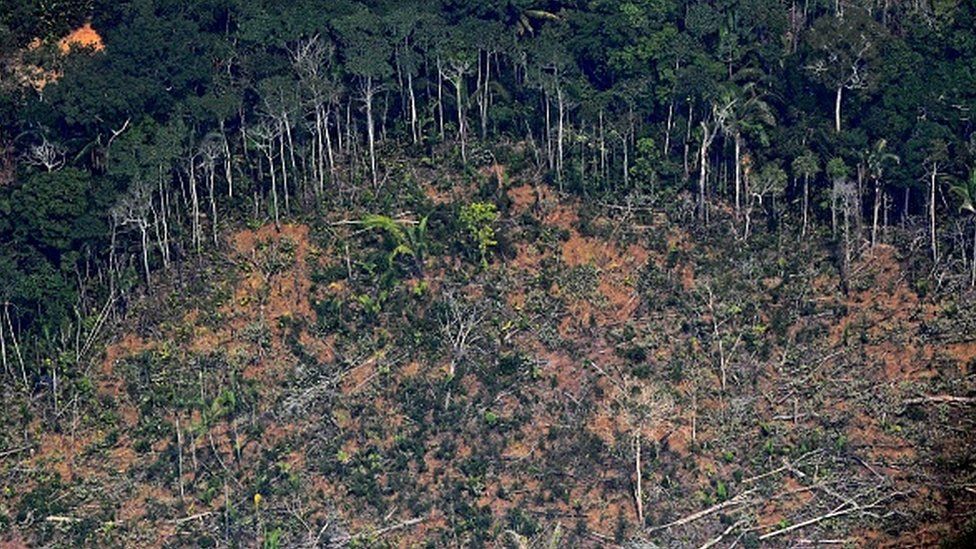
Conservationists say one of the world's largest eagles has "nearly zero" chance of surviving Amazon deforestation.
According to a new study, the bird is struggling to feed its young in parts of the rainforest that have been stripped of trees.
About 17% of the Amazon has been destroyed over the past 50 years, and losses have recently been on the rise.
The harpy eagle is the largest in the Americas, with huge talons for hunting monkeys and sloths in the treetops.
The Amazon is regarded as the "last stronghold" for the harpy, with more than 90% of the existing population thought to reside there.
The bird is among millions of animals in the Amazon whose geographic range is shrinking, said study researcher Carlos Peres, professor of environmental sciences at the University of East Anglia, UK.
"Considering that harpy eagles have the slowest life cycle of all bird species, their chances of adapting to highly deforested landscapes are nearly zero," he said.
Conservation measures, such as moving young eagles and supplementing their diets, will be critical to the survival of the species, Prof Peres added.

The harpy eagle (Harpia harpyja) is one of the largest raptors in the world, with adult females weighing in at up to 10 kg (22 lbs).
The birds live in tropical forests from Central America to northern Argentina, but have disappeared in large parts of their former range.
The escalating rate of forest destruction in the region, along with hunting, is threatening the bird's existence.
Despite having legal protection in several countries, including Brazil, Panama and Suriname, safeguards are difficult to enforce in remote areas of forest.
In the study, researchers led by Dr Everton Miranda of the University of KwaZulu-Natal, South Africa, monitored 16 nests in Amazonian forests in Mato Grosso, Brazil using cameras.

They also referenced maps and Google Earth to calculate deforestation levels around nests.
Bone fragments revealed the eagles were feasting mainly on two-toed sloths, brown capuchin monkeys and grey woolly monkeys. In deforested areas they did not find alternative food, and fed their young less frequently.
In landscapes with 50-70% deforestation, three eaglets died from starvation, and no nests were found in areas with deforestation over 70%.
The scientists calculated that areas that have lost more than half their trees are unsuitable for harpy eagles to successfully raise young and estimate that around 35% of northern Mato Grosso is unsuitable for harpy eagles to breed.
This may have caused a decline in numbers of breeding pairs by more than 3,000 since 1985.
The research is published in Scientific Reports.
Follow Helen on Twitter.
"last" - Google News
June 30, 2021 at 10:00PM
https://ift.tt/3jtd55c
Amazon eagle faces starvation in 'last stronghold' - BBC News
"last" - Google News
https://ift.tt/2rbmsh7
https://ift.tt/2Wq6qvt
Bagikan Berita Ini















0 Response to "Amazon eagle faces starvation in 'last stronghold' - BBC News"
Post a Comment